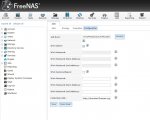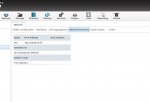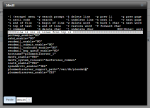There's quite a bit we need to unpack here.
First off, some basic networking. Each machine on your network needs an IP address to communicate. Most devices are configured using DHCP, which means they get an IP address that is automatically given out by a central server. For most home networks, the router acts as a DHCP server. On the other hand, most servers are configured with a static IP address. This IP doesn't change, and allows you (the user) and other machines (the clients) to reliably access the services on the server.
Most likely, what happened is that, when you switched your router, you also switched your DHCP server to the new Google WiFi router. This DHCP server has no idea what previous IPs were on your network, and just handed out IPs, first-come, first-server, like it's programmed to. This means, when your Plex jail requested an IP, it got something completely different than it was used to. Same thing happened to FreeNAS.
Our end goal is to set your FreeNAS server, and all the jails, to static IP addresses. However, there are a couple things we should do first.
First, let's make a plan of your network. I believe the Google WiFi uses 192.168.86.1 as its IP on 192.168.86.0/24 as the network (the /24 is CIDR notation. You might also see this as subnet mask 255.225.255.0). What this means is that all your devices are on the network 192.168.86.x. The default DHCP range for the Google WiFi is 192.168.86.20-250. This means we want all of our static devices to live in the range of 192.168.86.2-19. I'm going to make some choices, and you can make different ones, you just have to be consistent.
Here are our used IPs
- Google WiFi Router - 192.168.86.1
- FreeNAS - 192.168.86.5
- Plex Jail - 192.168.86.6
- DHCP range - 192.168.86.20-250
(I left a few IPs in low numbers for future network expansion, if you ever go that route. Again, that's my preference).
Now, we have our IPs, but we need some more information to set them. Three important pieces of information are your Gateway, your DNS server(s), and your subnet mask. I'm going to guess that the first two are both 192.168.86.1 and the last is 255.255.255.0, but let's confirm: from a command prompt on Windows, run the command
. You should see a line that says "Default Gateway", one or more lines that say "DNS Servers", and a line than says "subnet mask". Note these down.
Now, we're ready! The easiest way to set a static IP for FreeNAS is from the console:
http://blog.programster.org/freenas-set-static-ip
Now that FreeNAS is set to a static IP, you can set the jail to a static IP: go to your jail settings, Advanced options, and set the static IP:
https://doc.freenas.org/9.3/freenas_jails.html#adding-jails



